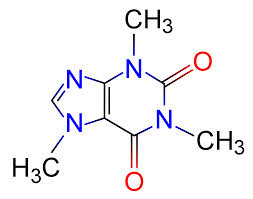5: Energy and Chemical Reactions
- Page ID
- 52105
\( \newcommand{\vecs}[1]{\overset { \scriptstyle \rightharpoonup} {\mathbf{#1}} } \) \( \newcommand{\vecd}[1]{\overset{-\!-\!\rightharpoonup}{\vphantom{a}\smash {#1}}} \)\(\newcommand{\id}{\mathrm{id}}\) \( \newcommand{\Span}{\mathrm{span}}\) \( \newcommand{\kernel}{\mathrm{null}\,}\) \( \newcommand{\range}{\mathrm{range}\,}\) \( \newcommand{\RealPart}{\mathrm{Re}}\) \( \newcommand{\ImaginaryPart}{\mathrm{Im}}\) \( \newcommand{\Argument}{\mathrm{Arg}}\) \( \newcommand{\norm}[1]{\| #1 \|}\) \( \newcommand{\inner}[2]{\langle #1, #2 \rangle}\) \( \newcommand{\Span}{\mathrm{span}}\) \(\newcommand{\id}{\mathrm{id}}\) \( \newcommand{\Span}{\mathrm{span}}\) \( \newcommand{\kernel}{\mathrm{null}\,}\) \( \newcommand{\range}{\mathrm{range}\,}\) \( \newcommand{\RealPart}{\mathrm{Re}}\) \( \newcommand{\ImaginaryPart}{\mathrm{Im}}\) \( \newcommand{\Argument}{\mathrm{Arg}}\) \( \newcommand{\norm}[1]{\| #1 \|}\) \( \newcommand{\inner}[2]{\langle #1, #2 \rangle}\) \( \newcommand{\Span}{\mathrm{span}}\)\(\newcommand{\AA}{\unicode[.8,0]{x212B}}\)
 |
UALR 1402: General Chemistry I |
 |
Hypothes.is Tag= s2020c1402c5
Note: Any annotation tagged s2020c1402c5 on any open access page on the web will show at the bottom of this page.
You need to log in to https://web.hypothes.is/ to see annotations to the group 1402_Summer_2020
- 5.1: Energy
- Basic introduction to the concept of energy, with a description of kinetic with respect to chemical entities.
- 5.2: Heat Capacity
- The heat capacity of a substance describes how its temperature changes as it absorbs heat, it is the capacity of a substance to absorb heat.
- 5.3: Energy and Phase Transitions
- These temperature goes over heat curves, energy and phase changes.
- 5.4: First Law of Thermodynamics
- The first law of thermodynamics states that energy can not be created or destroyed, that is, the energy of the universe is constant. This allows us to define a thermodynamic system, which in the case of chemistry is a reaction, with the surroundings being everything else.
- 5.5: Enthalpy Changes of Chemical Reactions
- Determining the enthalpy of reaction for balanced equations
- 5.6: Calorimetry
- Applications of the First Law of Thermodynamics to calorimetric calculations involving both real and ideal calorimeters
- 5.7: Enthalpy Calculations
- Calculating enthalpies of reaction from heats of formation or combustion data, and applying it to real systems.


